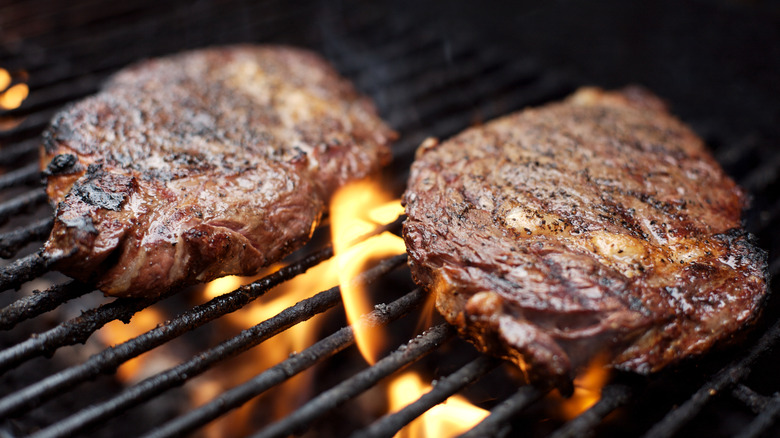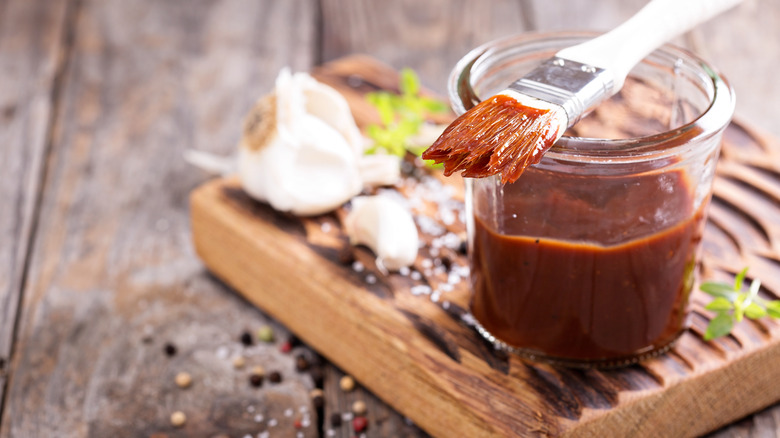The Glazing Technique To Multiply A Seared Steak's Crust
Making a great seared steak is a delicate art, and a lot of that art is geared toward forming the perfect crust. Endless hours of trials and testing from some of the world's top chefs have gone into finding a method that results in a perfectly cooked interior and blackened exterior, giving us home-run methods like sous-vide steak and the reverse sear that even home cooks can pull off with ease. But sometimes great isn't good enough. You need more than a well-browned crust: You want a crust that is thick, crispy, and packed with as much flavor as you can draw from your steak. That is where a sweet and salty glaze comes in.
Brushing your steak with a thin, glossy coat is an easy trick to incorporate at the end of your steak recipes. Just mix together a few tablespoons of a salty base like soy sauce or Worcestershire with a teaspoon or two of sugar or honey. You can include other liquid flavorings like chili paste or mustard that fit your recipe or tastes, and then cook it down until it's thickened but still a bit runny. When it comes time to sear your steak, do it at a slighter lower temperature than normal to prevent the glaze from burning, and then brush it on as you brown the outside. You'll get a picture-perfect crust on your steak with plenty of crunchy textures.
Glazing a seared steak thickens and crisps
Glazing does a few things to give you a great crust. The browning on the exterior of your steak comes from the Maillard reaction, which is the result of protein and sugar interacting with high heat and creating new flavors. A glaze that incorporates some sweet elements works by giving the heat from your pan or grill more sugars to interact with, increasing the complexity and making your steak tastier. Keeping the coating thin reduces moisture that could inhibit browning, and instead allows the glaze to cook and brown with the exterior of the steak itself.
The sweet element is the essential part of this kind of glaze because of caramelization, which is not only another way of adding flavor but helps with texture as well. The Maillard reaction and caramelization can happen together, but they aren't the same; While the exterior of your steak can brown on its own, a glaze with sweet ingredients helps it caramelize in a way it couldn't before, and you get a crust that's both extra-crispy and thicker from the layer of glaze.

